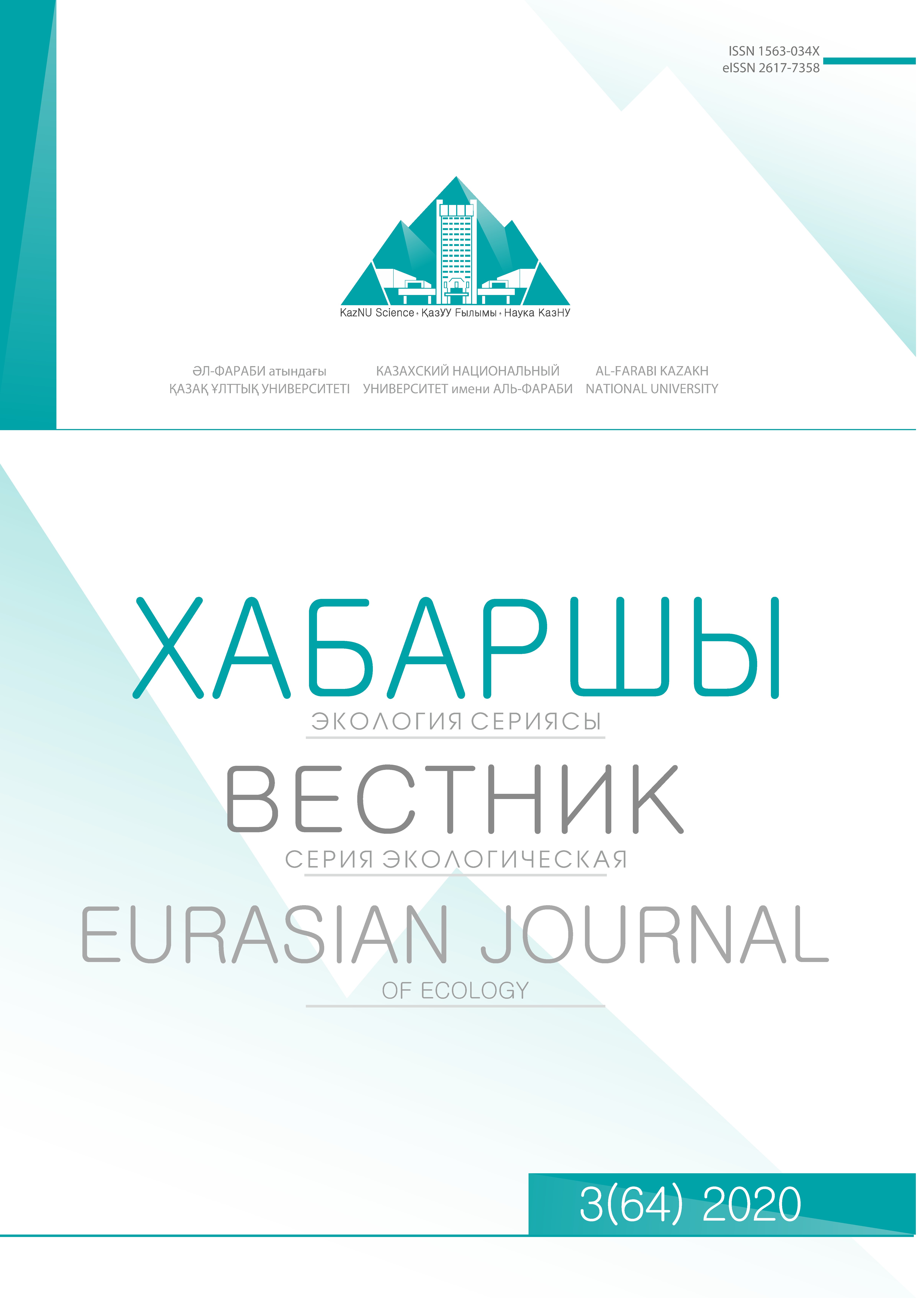Coenoflora of Dactylorhiza incarnata (L.) Soo populations of the Kalba ridge
DOI:
https://doi.org/10.26577/EJE.2020.v64.i3.10Abstract
The article provides an ecological-coenotic analysis of the flora of the Dactylorhiza incarnata populations on the Kalba ridge. The ecological optimum of the species is established. On the basis of field
surveys, 4 main populations were identified, 13 localities were recorded. The coenoflora of D. incarnata
populations on the Kalba ridge includes 117 species belonging to 30 families and 80 genera. The typical
marker species are Thalictrum simplex L., Salix viminalis L., Filipendula ulmaria (L.) Maxim., Sanguisorba
officinalis L., Geranium pratense L., Festuca pratensis Huds. The conoecotypes are occupied by mossy
rocks, gravelly banks of streams and mountain rivers. The floral similarity of the studied populations varies within 9–27%. Ecologically, in all populations, the basis of phytocenoses is formed by mesophytes
– 67–75%, in a smaller proportion are mesohygrophytes – 16–27% and xeromesophytes – 6–16%. The
predominant life form is herbaceous vegetation – 81–95%, the share of shrubs and trees is insignificant
– 5–19%. The ecological optimum of D. incarnata falls on the southeastern slopes with diffuse illumination and moderate wind impact. The Thalictrum-Sanguisorba-Filipendula and herbal-Carex phytocenoses have optimal conditions: overly humid meadows and forest edges with low density and competition.
Self-maintenance and reproduction of the species is carried out mainly by seeds, less often by vegetative
division of the finger root. When analyzing the age composition of populations, the dynamics and stability of coenopopulations, it was found that the recovery index is within the optimum. The dominant
position is occupied by individuals of the virginal and pregenerative stages of growth.
Key words: Dactylorhiza incarnata (L.) Soo, floristic composition, Kalba ridge, ecological-coenotic
analysis, state of the species.




